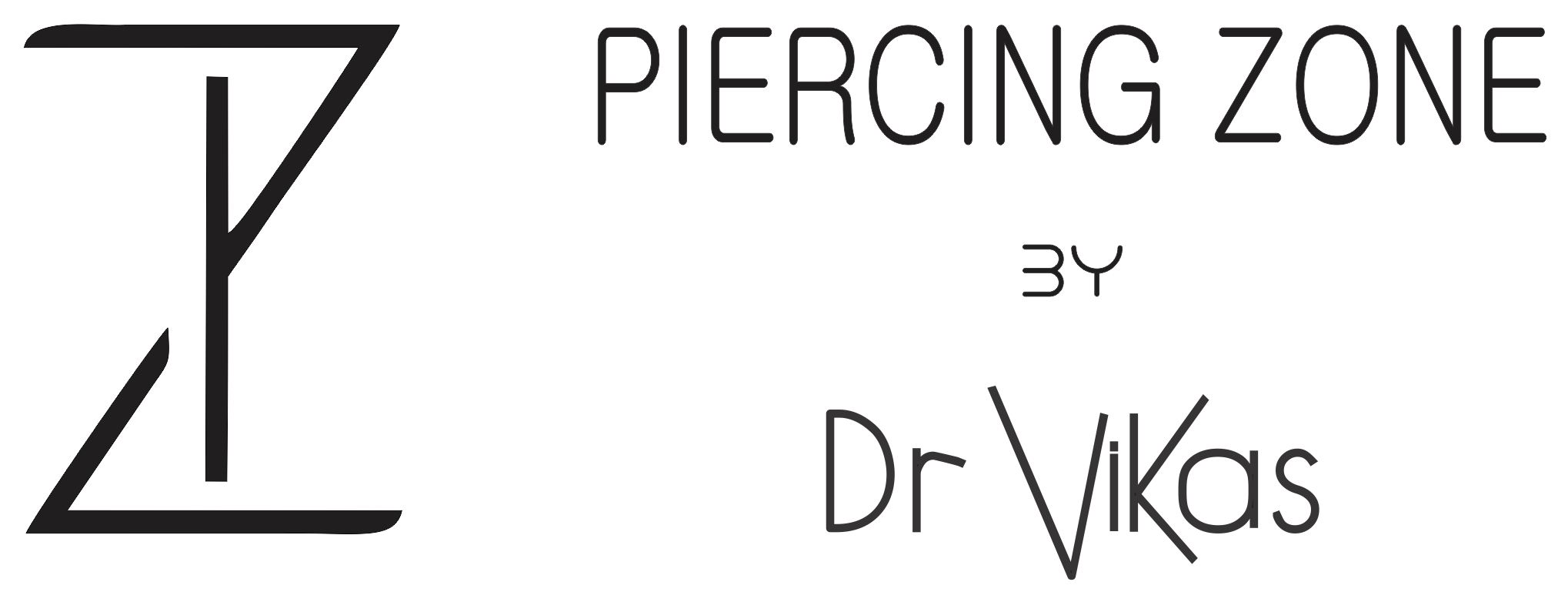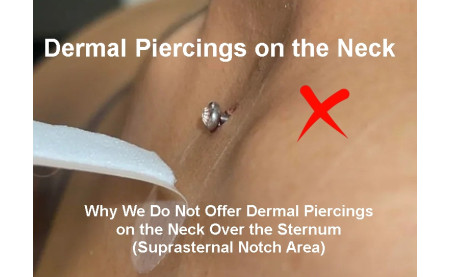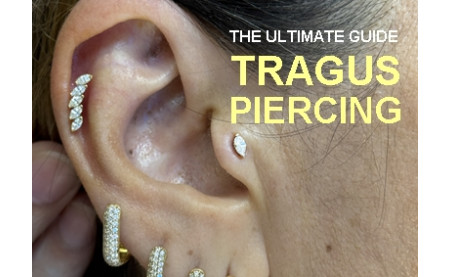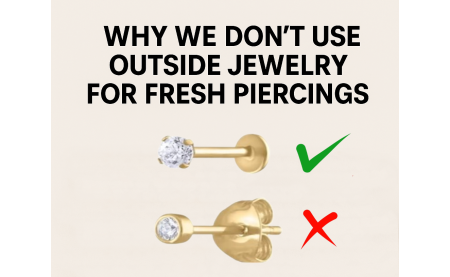Daith Piercings A Complete Guide
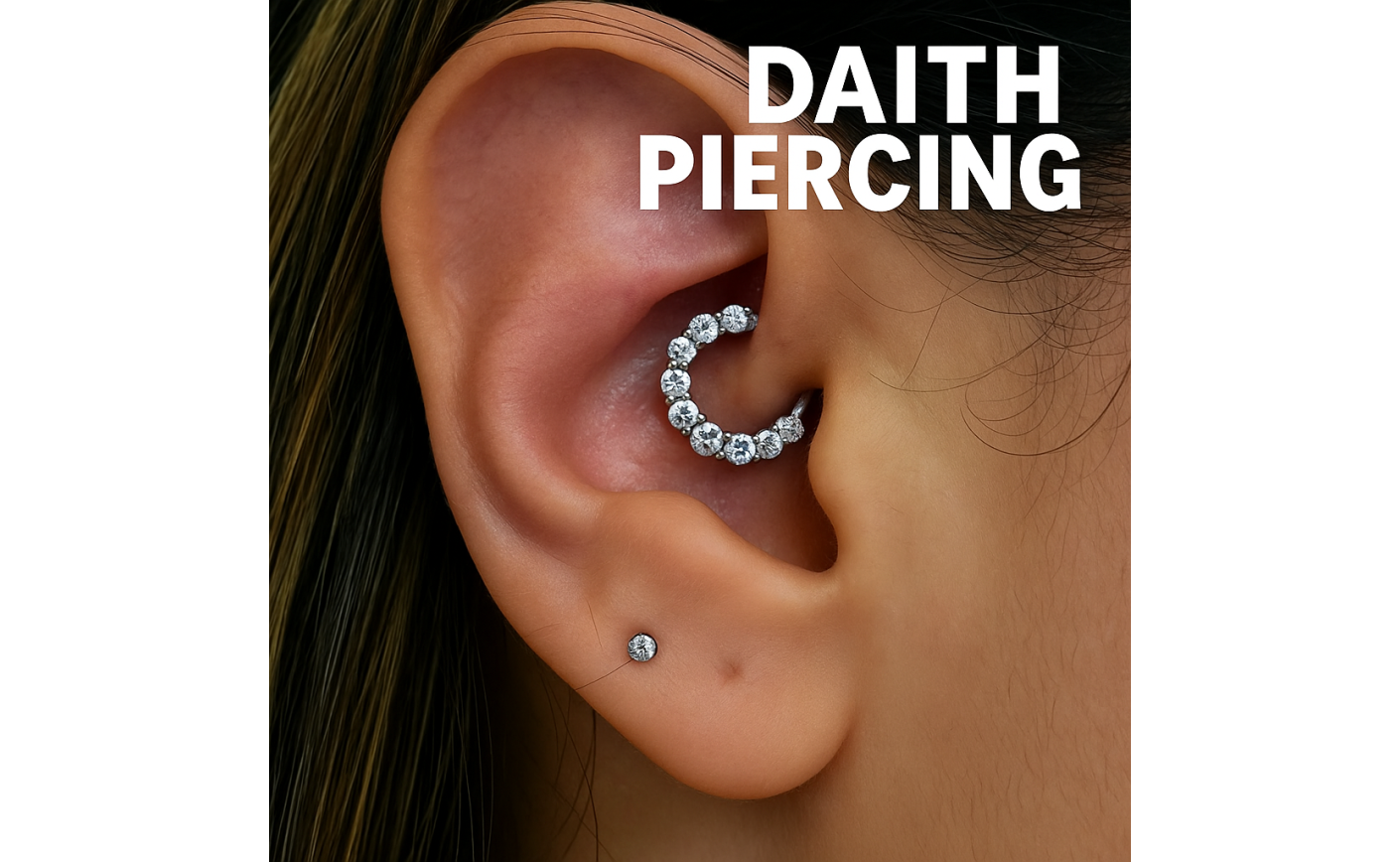
Daith piercings have skyrocketed in popularity over the past few years—and it’s easy to see why. These unique inner-ear piercings sit at the center of the ear’s bowl, perfectly framed for decorative hoops and statement jewelry. With the added bonus of being mask-friendly, Daith piercings are a go-to for ear styling in the modern age.
But while they look magical, Daith piercings are not beginner-friendly. They're known for being both technically challenging to perform and tricky to heal.
So, before you take the plunge, here’s everything you need to know—straight from Dubai’s premium piercing experts.
What Is a Daith Piercing?
A Daith piercing passes through the thick cartilage fold between the tragus and forward helix, deep inside the ear. The jewelry usually appears to “float” in the center, as the actual piercing is hidden from plain sight.
Not to be confused with a rook piercing, the Daith is more central and tucked within the inner ear. That placement, while beautiful, makes it more complex.
Why does this matter?
Because of its unique location:
- Placement must be precise
- Angling must be correct
- If done too shallow or off-angle, it may migrate, reject, or simply fail to heal
Always choose a highly experienced piercer for this one—like our team at Piercing Zone by Dr. Vikas.
Healing a Daith: Not for the Lazy
One of the biggest challenges with a Daith piercing is aftercare visibility—you simply can’t see it easily. Cleaning is difficult, and irritations may go unnoticed.
Tips for a smooth Daith healing:
- Take regular photos with flash to check the area
- Avoid sleeping on the pierced side
- Ask a friend to check it for signs of swelling or crust
- Avoid earbuds or in-ear headphones during healing
- Stick to your piercer’s aftercare routine religiously
Healing can take 6–9 months or longer, depending on your body and lifestyle.
What Jewelry Can I Wear in a Daith?
The answer is simple: Hoops, hoops, and more hoops!
From sleek gold rings to opulent gemmed clickers, the Daith is made for circular jewelry. It’s one of the few piercings where forward-facing rings are naturally showcased.
✅ Ideal Jewelry:
- Captive bead rings
- Seamless clickers
- Decorative gold hoops
- Slightly oversized rings (help with swelling and movement)
❌ Avoid:
- Curved barbells (can rotate into the canal and irritate the piercing)
- Heart-shaped jewelry (great after healing, not during)
- Plain seam rings (difficult to clean and adjust while healing)
Daith Piercings for Migraines: Fact or Fiction?
Sadly, fiction.
There's:
- No nerve involved in this area that controls migraine activity
- No acupuncture point that matches the Daith location
- No clinical trials validating it as a treatment
We pierce for aesthetics and self-expression—not medical cures.
Can You Change a Daith Piercing Yourself?
Not easily. Because of the piercing’s tucked-away location, changing Daith jewelry yourself can be frustrating and risky, even when fully healed.
We strongly recommend visiting a professional piercer (like us!) for any jewelry changes.
How Do You Pronounce "Daith"?
Proper pronunciation: “Doth”, rhyming with moth.
Most people say “dayth,” but the name comes from the Hebrew word da’at (דעת), meaning knowledge or intelligence.
Final Thoughts
Daith piercings are one of the most striking, stylish, and satisfying additions to an ear project—but they’re not for everyone. They require:
- A skilled hand to pierce
- Diligent aftercare
- Patience during healing
If you’re up for the challenge, a Daith can transform your ear aesthetic and let you explore some of the most exciting jewelry on the market.
